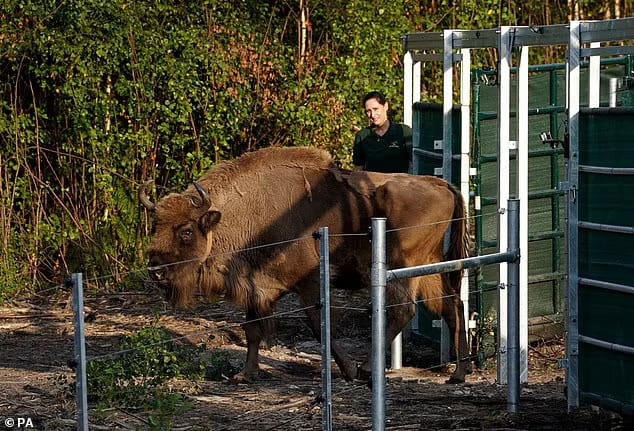Cooking in nature strips back the complexities of modern life, presenting an opportunity to connect with the environment in a primal way. It’s about utilizing what you have, where you are, to nourish yourself.
Embracing the wilderness requires a shift in mindset from the convenience-driven approaches of contemporary kitchens to the resourceful, innovative methods of our ancestors. Cooking in nature involves using direct heat from a fire, finding or constructing basic cookware, and relying on locally sourced ingredients.
This comprehensive guide explores the essential survival skills needed to cook in the wild without modern conveniences, ensuring that your outdoor culinary experiences are not only possible but also enjoyable.
Benefits of Learning Natural Cooking
Understanding how to cook in the wild is invaluable, whether you’re a hiker, camper, or survival enthusiast. It fosters a deeper connection with nature, enhances self-reliance, and can be a fun, rewarding challenge. Plus, it’s a critical survival skill that enriches your outdoor adventures.
Essential Tools for Cooking in the Wild
Your toolkit doesn’t need to be elaborate. A sharp knife, a durable pot, and a portable grate or tripod for hanging pots over a fire are the basics. Creativity and improvisation can turn natural materials into cooking utensils, such as using flat stones as griddles or green sticks as skewers.
Improvised Cookware
Nature is abundant with cookware alternatives. Bamboo segments can serve as pots for boiling water, while large leaves can wrap food for steaming. Clay from riverbeds can even be modeled into temporary cookware for baking over coals.
Natural Sources of Fuel
Wood is the primary fuel source in the wild, but not all wood is created equal. Hardwoods like oak and hickory provide a long, steady burn, ideal for most cooking needs, while softwoods like pine ignite quickly for fast, high-heat applications.
Preparing for Outdoor Cooking
Safety is paramount. Select a location away from dry brush to reduce wildfire risk and on stable ground to prevent accidental tipping of cookware. Consider wind direction to keep smoke away from your cooking area and campsite.
Food Storage and Preservation
Without refrigeration, keeping food safe is challenging but manageable. Techniques such as smoking, drying, and salting can preserve meat and fish, while cool, shaded spots near streams can help keep perishables fresher for longer.
Techniques of Cooking Without Modern Conveniences
A reliable cooking fire requires more than just ignition. Creating a stable, controllable flame involves arranging wood for optimal airflow and heat concentration, allowing for various cooking methods from boiling to grilling.
Direct Flame Cooking
Direct flame cooking is quick and straightforward. Skewering meat or vegetables and holding them over the flames can cook food rapidly, but it requires constant attention to avoid burning.
Stone Cooking
Heated stones provide a versatile cooking surface. Placed around or directly in a fire until hot, they can then be used to grill meats or vegetables, or buried with food for slow roasting.
Pit Cooking
Pit cooking is an ancient method ideal for large meals. Digging a hole, lining it with hot stones, and covering it with earth allows for slow, even cooking that imbues food with a unique flavor.
Recipes for Cooking in the Wild
Now, let’s explore some popular dishes for cooking in nature:
Spit-Roasted Game Bird
Ingredients:
- 1 game bird (e.g., quail, pigeon, or small chicken), cleaned
- Salt and wild herbs (such as rosemary or thyme, if available)
- A long, sturdy stick or green twig for the spit
Instructions:
- Season the bird inside and out with salt and any herbs you’ve found.
- Skewer the bird lengthwise with the stick, making sure it’s secure.
- Position the spit over the fire, resting the ends on stones or logs so the bird is suspended in the heat but not directly over flames.
- Rotate the spit regularly for even cooking, about 45 minutes to 1 hour, depending on the size of the bird and the heat of the fire. The meat should be cooked through, and the juices should be clear.
- Let it rest a few minutes before carving or tearing to serve.
Rock-Baked Forest Rabbit
Ingredients:
- 1 whole rabbit, cleaned and gutted
- Salt and wild herbs
- Large leaves or wet clay for wrapping
- Several large, flat stones
Instructions:
- Season the rabbit with salt and herbs.
- Wrap the rabbit in large leaves or encase it in wet clay, making sure it’s completely covered.
- Place the stones in a fire and heat them for about 30-60 minutes.
- Remove the stones using sticks or gloves, and create a bed in the ashes.
- Place the wrapped rabbit on the stones and cover it with more hot stones.
- Let it cook for about 1-2 hours, depending on the size of the rabbit and the heat of the stones.
- If encased in clay, the outside will harden; crack it open to reveal the cooked rabbit. If wrapped in leaves, carefully unwrap before serving.
Wild Herb Meatballs
Ingredients:
- Ground meat (obtained from any game or fish)
- Salt and a mix of finely chopped wild herbs (such as sage, wild garlic, or nettles)
- Water (optional, to help bind the mixture)
Instructions:
- In a bowl, combine the ground meat with salt and chopped herbs. If the mixture is too dry, add a little water to help it stick together.
- Form small balls with the meat mixture.
- You can cook these meatballs directly over the fire on skewers, place them on hot stones beside the fire, or bury them in ashes near the coals for a slow cook.
- Cook, turning occasionally, until the meatballs are browned on the outside and cooked through for about 10-15 minutes.
- Serve hot, accompanied by foraged greens or tubers.
Ash-Roasted Venison
Ingredients:
- Venison steak or a small cut of meat
- Salt and wild herbs
Instructions:
- Season the venison with salt and herbs.
- Dig a shallow pit in the ground near your fire and place a bed of hot coals inside.
- Place the seasoned venison directly on the coals and cover it with more coals and ash.
- Let it cook for about 10-20 minutes, depending on the thickness of the meat and your desired doneness.
- Carefully remove the meat from the ashes, brushing off any ash or coals.
- Slice and check for doneness. If necessary, return it to the coals for additional cooking.
- Once cooked to your liking, let it rest for a few minutes before serving.
Safety Tips and Best Practices
Always extinguish fires completely using water or dirt, never leave food unattended to avoid attracting wildlife; and practice Leave No Trace principles to minimize your environmental impact. For your safety, while cooking in the wild, bring a shotgun with enough 410 ammo to ensure protection against any wildlife encounters, allowing you to focus on the art of wilderness cooking with peace of mind.”
Conclusion
Cooking in the wild without modern conveniences is a rewarding skill that deepens your connection to nature and enhances your outdoor experiences. With a bit of preparation, knowledge, and respect for the environment, anyone can enjoy the simple pleasure of a meal cooked over an open fire.
FAQs
Q1: How do you clean cookware in the wild?
A1: Use sand, ash, or natural abrasives found in your environment. Rinse with water if available, and boil water in the cookware for sterilization if necessary.
Q2: What’s the easiest food to cook in the wild?
A2: Fish and small game can be simple to prepare, requiring minimal seasoning and cooking directly over a fire. For vegetarians, foraged greens and tubers are also easy to cook with basic methods.
Q3: How do you make a fire without matches or a lighter?
A3: The bow drill method, using friction to generate heat, is effective but requires practice. Alternatively, a magnifying glass or a piece of clear ice can focus sunlight onto tinder to ignite a flame.
Q4: Is it safe to forage for wild plants for cooking?
A4: Yes, but only if you have the proper knowledge to identify safe, edible plants. Always err on the side of caution and consult a local guide or reference book.
Q5: Can you bake in the wild?
A5: Absolutely. Baking in the wild can be achieved by using hot stones or embers to create an oven-like environment. Enclose the food in large leaves or clay for baking.







Leave a Reply